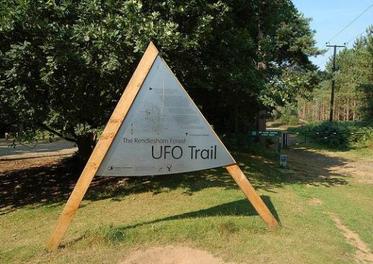Robert Earle of Huntington
Lies under this little stone.
No archer was like him so good;
His wildnesse named him Robbin Hood.
Full thirteene yeares, and something more,
These northerne parts he vexed sore.
Such out-lawes as he and his men
May England never know agen.
This small poem seems to tie nicely with the famous character we have a picture of today, suggesting that he was a real Earl. Of course, he must have been a good guy – all the stories tell us so . . . don't they? Well, other historians have identified a farmer called Roger Godberd who was described as a thug that robbed the rich - he was even captured and held in Nottingham Castle. Could he have been the basis for this well-known character? A publication of a book called Robin Hood: The English Outlaw Unmasked in 2011 leads you to believe this is the guy! Or, could he be one William Robehod as other historians have claimed? Having found evidence to back it up where he is listed for a crime as being part of an outlawed gang suspected of robberies. The truth is we will never know, but it still compels people today to read about it and speak the legend to their children of the do-gooder who stole from the rich to give to the poor.
There are many others too, Such as that of King Arthur. Was he a real hero? An individual? Or could his legend be built on a string of seven or eight different men who conquered battles and are known by same name over a span of a 100 years or so?
There are the many historical events and legends that writers repeatedly explore, such as the lost Princes in the tower (time of Richard 3rd), – what happened to them? Did they both die? Or just one? Was a serving boy used instead disguised as one of the Princes and the real Prince escaped unscathed in disguise? How did this part of history find its way to us?
So why am I tellling you all this?
Well, it's simply to open your mind to the possibilities. Even today we have unexplained occurences that may hold their secret forever but that doesn't mean we can't delve deep into our imagination to create possible scenarios for ourselves. Legends like these are often what inspire me to write, and as you begin to read my books you will see that in areas of my writing I include true facts. I love to incorporate elements of the truth to cement realism and create stories with a twist. (This will be no more obvious than in my forthcoming publication The Spirit of Peterborough). Such as the story of Robin Hood has been twisted and altered as it’s passed down through the centuries to create new tales and ideas about the legend, I like to do the same.
Over the years I have heard many tales relating to the numerous ghosts that apparently reside or have made their mark in the Peterborough area, with each and every one of them stimulating me to ask questions; what actually happened here? What was the trigger? And Why? This would then provoke me into researching as much as I possibly could about anything that could have played a part in the birth of this tale. And when I say this I don’t just mean ghosts – I am intrigued by all types of mysterious aspects such as UFO sightings, local historical legends, the unexplained or the paranormal, or even just purely unusual or quirky facts or events.
When something like this happens it makes you wonder – is there life out there? Something must have happened to cause this but, precisely what? Where is the truth? How much is exaggeration or the embellishment of well-meant rumours?
Numerous authors such as Dan Brown; T.H White; Mary Stewart; Philippa Gregory and even the writers behind the Doctor Who series get inspiration from true history, myths, and legends. They turn some strand of well-known historical truth and turn it into a great piece of fiction. They use fact to help make their writing more believable, persuading us into thinking that it was really like that. It then creates a circle of appetising reading as it evokes in readers a feel of wanting to find out more about that period or event.
So, the fascination for me is always to ask that question: What might have really happened? How could a particular scenario really have panned out?
Has anything strange really happened to you? Have you ever been intrigued or mystified enough to do your own research? Has there ever been anything that has compelled you to look deeper?
I'd love to hear. You never know, you might have the basis for a good story!
After all my research there is something I take with me now every time I write. No matter what you do . . . always look over your shoulder, and you never know what’s round the corner . . .


 RSS Feed
RSS Feed
